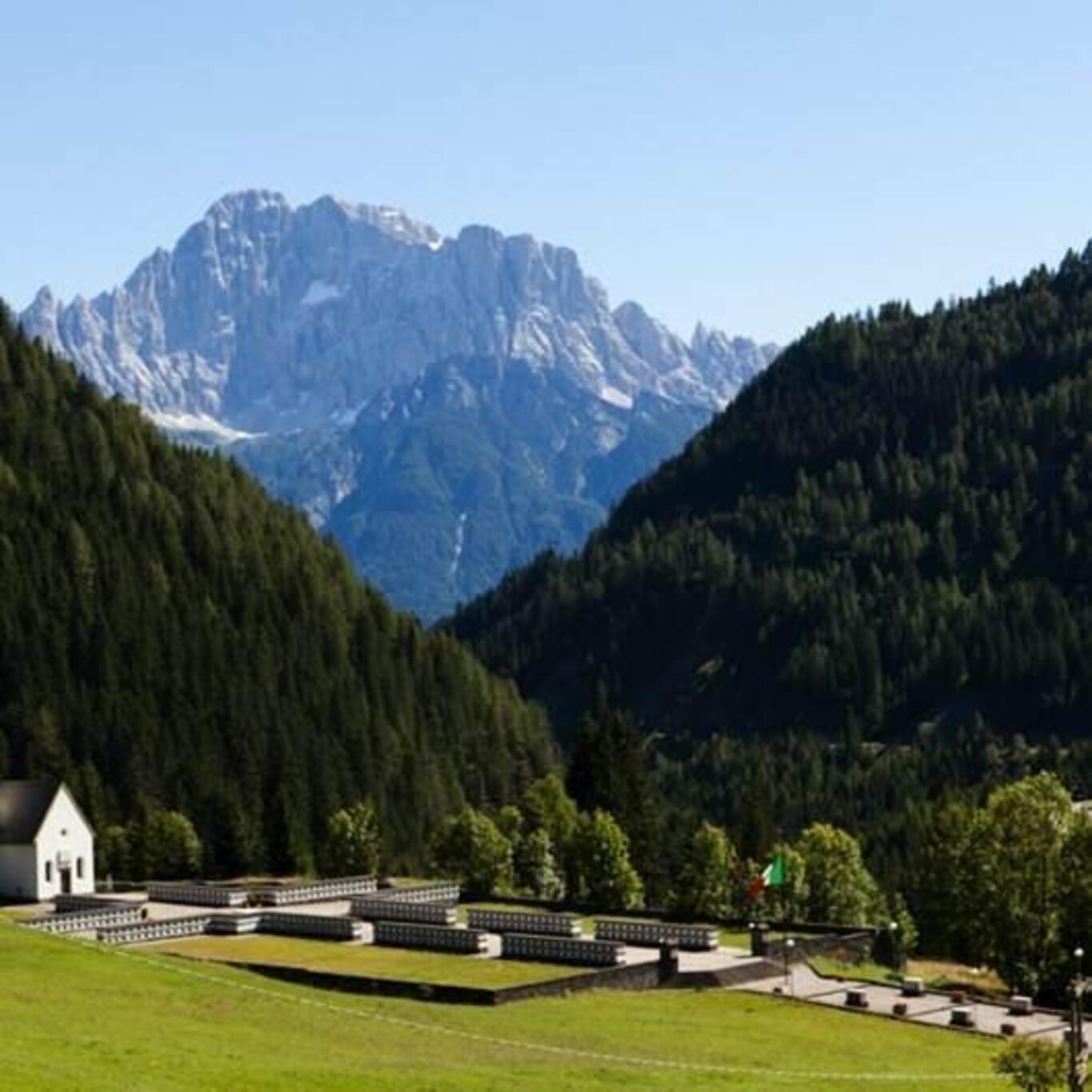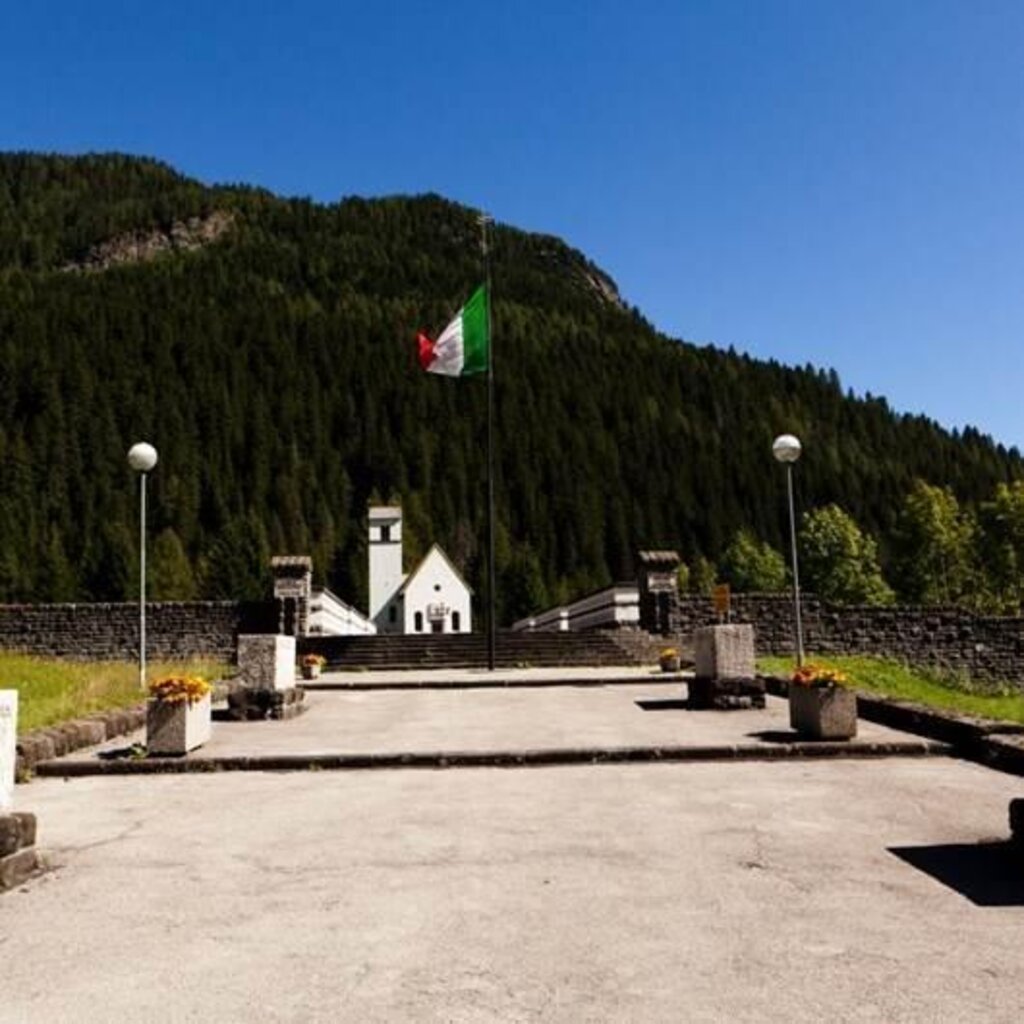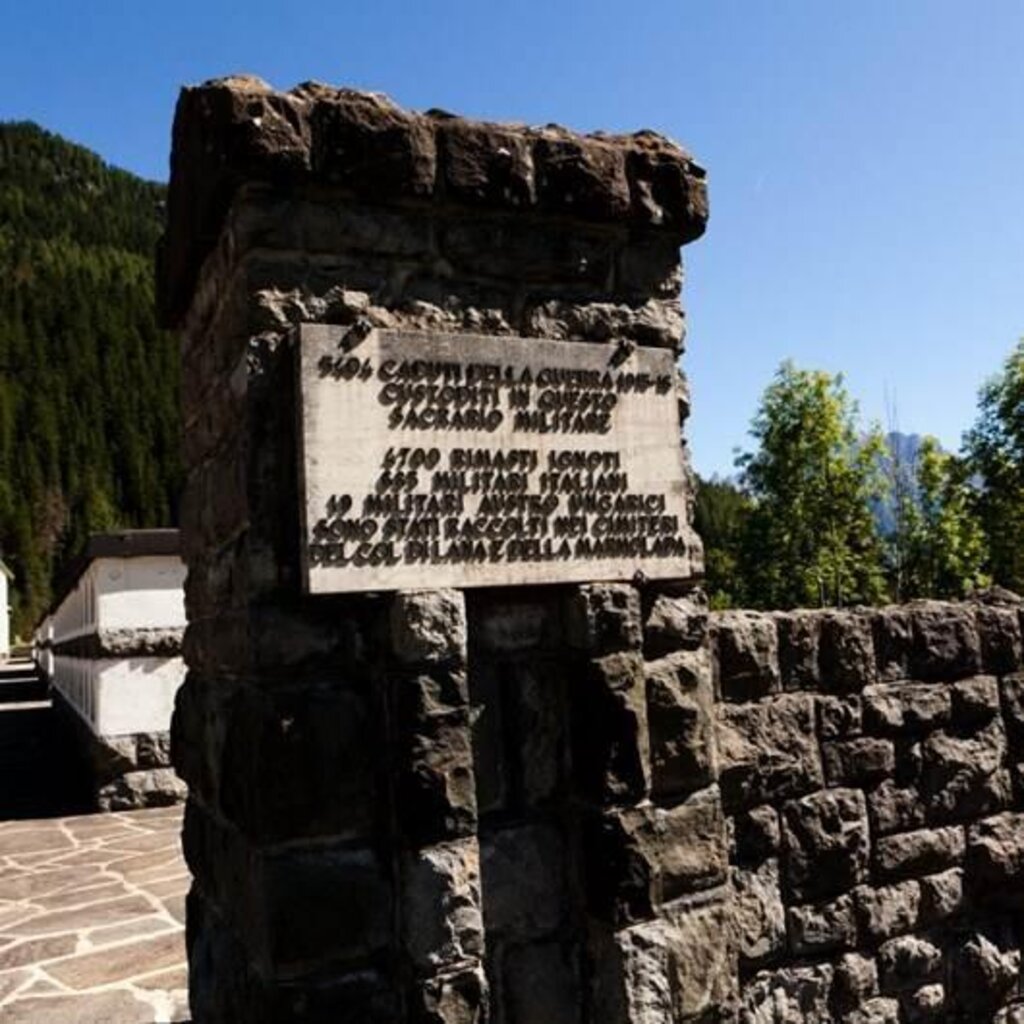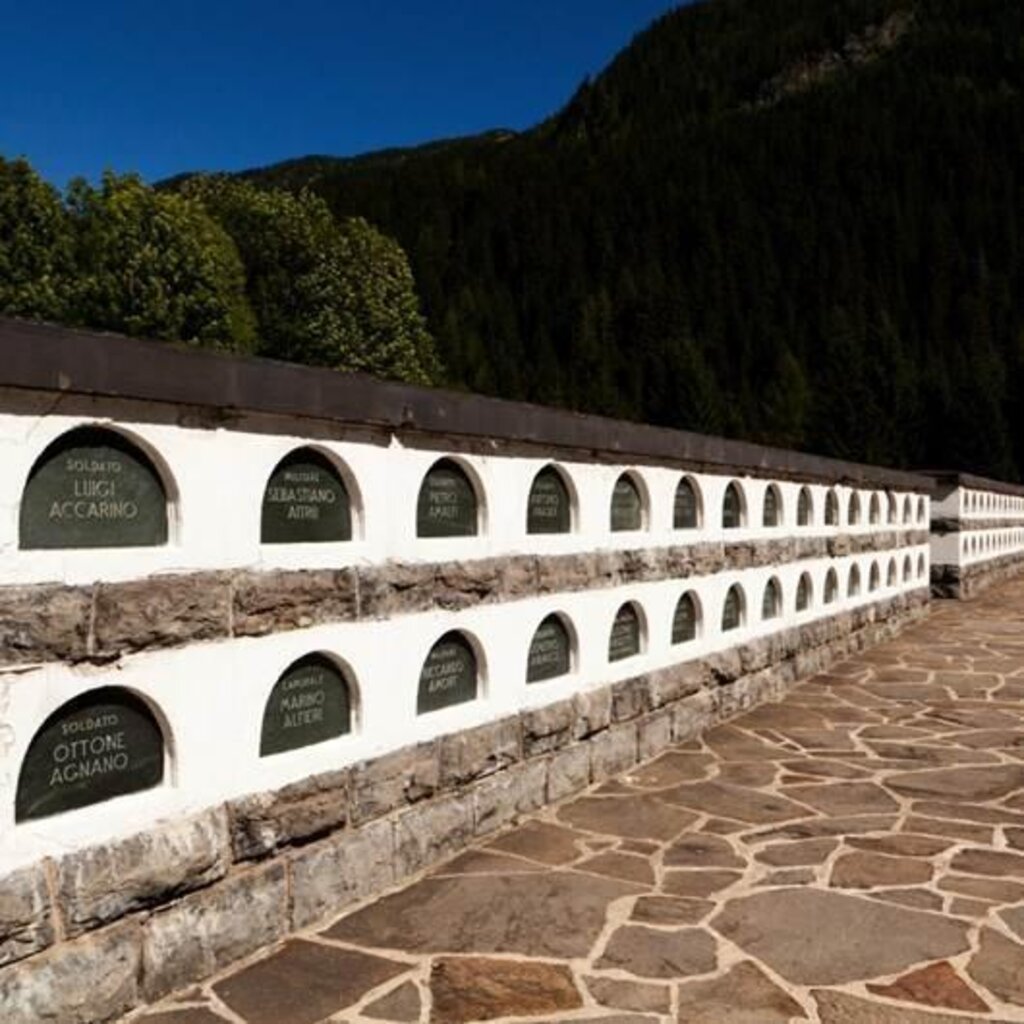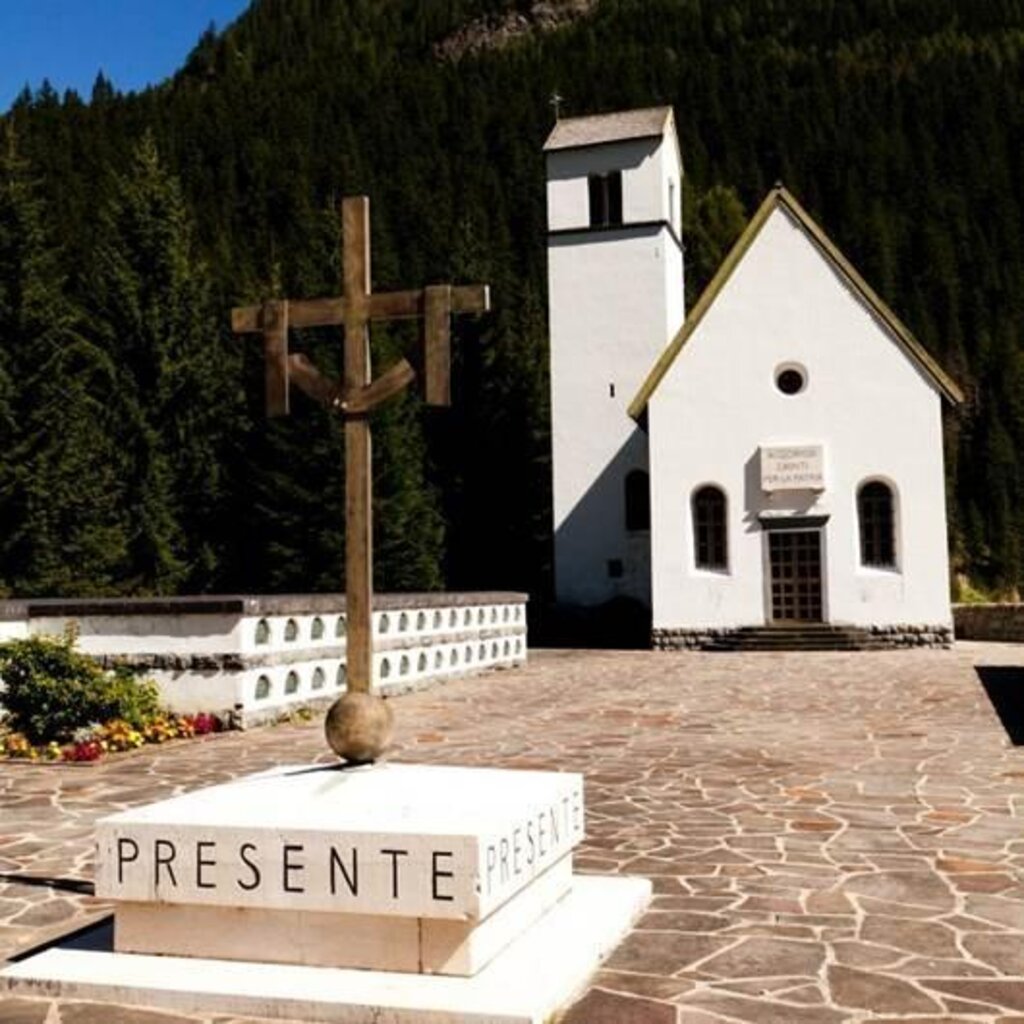It was built in 1938, under the commission of General Ugo Cei, based on a design by architect Giovanni Ceppi and sculptor Giannino Castiglioni, both already active in the imposing memorial of Cima Grappa; the work stands on a burial area consecrated sixteen years earlier, at the foot of Col di Lana, and develops in front of an existing chapel. The access avenue is flanked on either side by 14 monoliths, each dedicated to a major battle of the conflict. The construction, with a Latin cross shape, is characterized by the intersection of parallel buttresses in masonry, in which the 'columbarium' loculi are aligned in stacked rows, as on Grappa, closed by green marble slabs. It houses the remains of 704 known fallen soldiers, including 19 Austrians, and 4,705 unknown fallen soldiers. The focal point is marked by a cross, on whose base is inscribed
«Present»
referencing another, much more famous shrine, that of Redipuglia in the province of Gorizia, which was, not coincidentally, due to the same designers and inaugurated the same year. The complex is designed with a particular scenic function, accessible from the above road, in a nearly "aerial" view, framing the monument amid the green slopes of the valley, with the extraordinary north wall of the Civetta serving as an exceptional backdrop.
